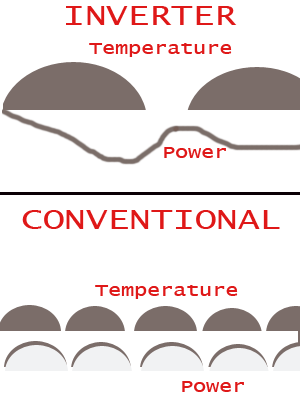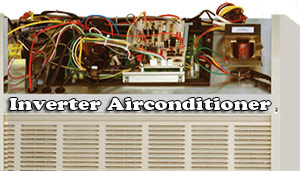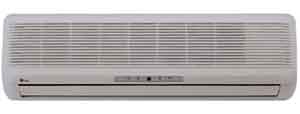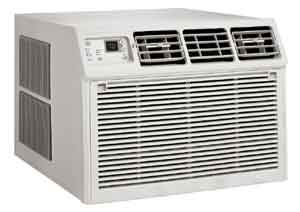| Chennai India | Transport | Chennai Real Estate | Home Issues | Education | Destination | Recreation | Chennai Hotels | Cars in India |
|
Home Issues
Pongal
December Festival
Henna Hair Dye
Home Flooring
Chennai Furniture
Home Furnishing
Ayurveda Treatment
Rainwater Harvesting
Navarathri Festival
Dengue Fever
Chickungunya
Summer Sunscreen
Heat Rash
Kanjivaram Silk Sari
Madras Filter Coffee
Vastu Shastra
Vastu Tips
Air conditioning Tips
|
Air conditioning Tips - Air conditionersAir conditioning is essential to maintain comfort levels and productivity in hot humid tropical climates like India. Airconditioners have become ubiquitous in most of the middle class and upper crest households these days. Air conditioners consume probably 80 % of the electricity used in a typical house in India. We have collated some detailed information in this page on air conditioning systems and the best way to save on money. Air conditioners - Primary Use: Air conditioning helps to dehumidify the air. Air conditioning works by first removing moisture from the air and then cooling it. This in turn reduces the incidence of mold and fungus. Dehumidification and lower temperatures reduce the growth of some molds and fungus by eliminating warm, moist areas in the home. Tropical climates imply high humidity level, which makes it hard for the human skin to evaporate the sweat. Coastal regions like Chennai require the use of air conditioners almost all through the year. All commercial establishments and homes use air conditioners (or AC in India and Aircon in Malaysia / Singapore) to improve the comfort factors and enhance the operating life of machinery and electronic equipment. Different people require different temperature settings for comfort. We feel comfortable when our bodies lose heat at the same rate as we produce it. Heat production varies with physical activity and our metabolic rates. At the same time, heat loss or heat gain depends on surface temperatures in the room, air movement and air temperature. What all this means is that your comfort factor depends on a lot of factors - one of which is the temperature. Living inside a deep freezer is not for the living! The Department of Energy in the United States estimates that nearly 40% of your energy loss is the result of air infiltration caused by wind driven pressures from the outside. "The opposing forces of pressure between your inside and outside walls cause heat and air conditioning to be virtually sucked from your home - through walls, ceilings, sill plates, sheathing joints, top plates, electrical outlets and every inch of the estimated half-mile of cracks in newly constructed homes". As air infiltrates, it causes changes in temperature that requires your air conditioner to work harder. Constant temperature fluctuations also reduce your comfort level. You feel too cold or too warm. Reducing air infiltration increases your home's comfort factor. Building a positive pressure in your air-conditioned rooms aids the retention of the cooled air in addition to making the air-filter less prone to clogging. Generally, a slight increase in positive pressure in a room tends to block the ingress of dust and insects through the crevices. Excessive positive and negative air pressures in a building can move moisture-laden air through holes in the building shell, leading to condensation within building cavities. Building experts have observed pressure-derived moisture problems at only ±1 Pascal (.004 inches of water column) during severe humidity conditions. But for maximum power saving, it is important to seal effectively all the air leaks in the airconditioned room. This prevents not only the entry of dust, but also maintains the low humidity level. A dry air can draw more perspiration from the body improving the comfort factor. You could keep the thermostat fairly turned up and still feel relatively cool. Factors to consider before buying an Airconditioner:
Amongst the most important considerations are size and energy efficiency. These days many people prefer split units to reduce the internal noise levels. Window type airconditioners generally produce more noise level inside. A properly sized, highly energy-efficient air conditioner will provide you with optimal comfort for a reasonable cost. Size refers to the air conditioner's cooling capacity measured in British Thermal Units (BTUs), which in turn refers to the amount of heat that will be removed per hour. Air weighs .076 lbs per cubic feet or 34.47 gms per cubic feet at sea level at standard temperature. A 5,000 BTU window air conditioner will remove 5,000 BTUs of heat per hour. A 'one-ton' air conditioner will remove 12,000 BTUs per hour while a two-ton airconditioner will remove 24000 BTU per hour. Saving Electricity: In a typical south Indian house, air conditioners consume 80 % of the total power used. So any measure in improving the efficiency or the usage can considerably save on the power bill. An air-conditioner is designed for long-term use. Therefore, long-term running costs, based on minimum use of 7 to 10 years, is a more important factor than the initial price when determining real economical efficiency. Energy Efficiency Rating: The energy efficiency rating (EER) of an air conditioner is its BTU rating over its wattage. For example, if a 10,000-BTU air conditioner consumes 1,200 watts, its EER is 8.3 (10,000 BTU/1,200 watts). Obviously, you would like the EER to be as high as possible, but normally a higher EER is accompanied by a higher price. Star Level rating for Split type Air conditioners Valid from 1st January 2014 to 31st December 2015 as per Bureau of Energy Efficiency Standards and Labeling Program Power Savings Guide. Energy Efficiency Ratio (Watt/Watt)
Inverter Air conditioners: Conventional AC compressor runs when it needs to cool and cycles off when the set temperature has been reached. All electric motors consume a high transient current every time they start. The starting current can be as high 300 % of normal running current. This imposes a burden on the Mains supply. Inverter technology uses a more efficient compressor which runs all the time but at different speeds matching the load requirement. This variable drive motor needs an inverter - electronics to change the Alternating Current (AC) to Direct Current (DC) and then feed a PWM (Pulse Width Modulator) - that sends proportional supply to the compressor.  
This way your AC compressor runs more efficiently saving you substantial money in your monthly EB bill. As a bonus, the compressor runs quieter and there is less cyclical temperature variation. The supply requirement can also come down. According to an American study, the savings attained can be as high as 58 % per year - assuming that we compare a conventional compressor that had a 10 SEER (Seasonal Energy Efficiency Ratio) Versus an inverter with PWM/PAM (Pulse Amplitude Modulation to supply peak current at high load needs) 24 SEER rating. Better Thermal Insulation: A false ceiling with better heat insulation efficiency can reduce as much as 20 % power bills. In addition adding insulating material on the walls with low K - value will also bring down the number of hours the compressor runs - enhancing economy. The k-value, or heat transfer coefficient, is the measured value of the heat flow, which is transferred through an area of 1 m² at a temperature difference of 1 K. A typical brick wall has a K value of 1.388 and polyurethane foam has a value of 0.028. The surface treatment like paint and the finish can have a bearing on this too. Adding reflective sun control films on the glass panes improves the energy efficiency. A bed room ac can be "programmed" to slacken off the thermostat (sleep mode) setting towards the morning. When you retire to bed in the night, you might need lower temperature setting than in the early morning. Or set the timer in the control panel of an Airconditioner to switch itself off towards the morning - a few hours before you wake up. If you have a one ton airconditioner, which consumes typically about 1330 W and you save 2 hours every day, your total savings in a year can be as high as 970 units or approximately Rs.3300 (assuming each unit costs Rs.3.50).
|


|
||||||||||||||||||||
|
|
||||||||||||||||||||||